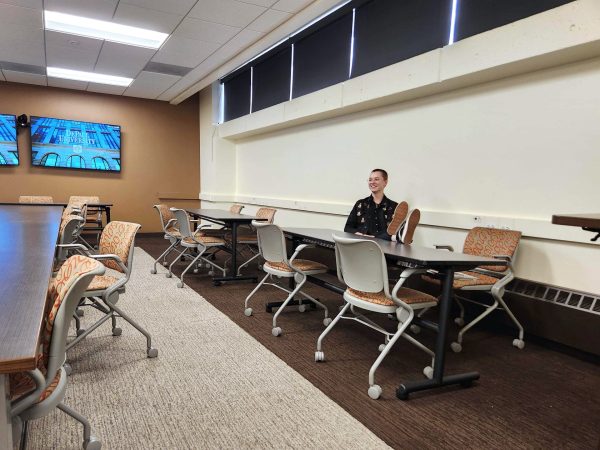COLUMN: CTA needs to do more to prevent sexual harassment
Credit: Lizzie Miller
A stranger kissed my foot on the Red Line last week. No, he didn’t trip and fall. No, it wasn’t some sort of accident. And no, I was not doing any sort of hallucinogenic mushrooms that would cause me to imagine this.
He stared at my sandal-clad feet for a moment, said, “your feet are beautiful,” and before I could fully comprehend what was happening, he leaned down and planted his lips on my feet.
In a mere 15-minute ride from the Granville to Fullerton station, sandal season was over only hours after it had begun for me. I didn’t know what to do. Do I report this incident to the police? What would I even say to them if I called? Is this even a crime?
This was, without a doubt, the strangest encounter I have had on the CTA,and that bar is HIGH. While it now gives me a decent party anecdote, it also shook me to the verge of tears because I felt so violated and disgusted.
Simply, a man I did not know put his mouth on my body, late at night, when my friend and I were the only two women in a train car. My mistake? Wearing sandals on the Red Line, apparently.
I am far from the only person to face harassment or assault on the CTA. A 2009 study from the Rogers Park Young Women’s Action Team (YWAT) found that 52% of survey respondents had been sexually harassed on the CTA.
While Brandon Johnson’s administration seeks to increase mental health care and treatment for substance abuse, he doesn’t have a direct plan to help women’s safety on the CTA. His website only says that he pledges to “bring safety features under local control.” The CTA and the City of Chicago need to introduce women-only cars on at least trains, if not buses as well.
Women-only cars aren’t a new phenomenon. They are quite common in metropolitan areas throughout the world. While the practice has been done intermittently in the U.S, currently no U.S cities do it. Mexico City, for example, has women-only cars on their metro system, as well as women-only coaches on the Metrobus system. The women-only car system isn’t perfect, but it is an actual attempt to help women, which Chicago CTA seems to be lacking.
Public mental health care for those struggling with substances and affordable healthcare are a huge step in the right direction, however, what do we do in the meantime?
This is not an op-ed in support of more policing. I firmly believe that would only exacerbate the problem and create even larger issues for marginalized communities in the city. However, there is a focus on small-scale solutions (emergency buttons in the cars) for large-scale issues such as women facing sexual harassment on CTA.
I shouldn’t have to pay extra to take an Uber at night to make sure I get home. I shouldn’t have to call a night out quits at 8 p.m. I shouldn’t have to change my footwear because I might get my foot kissed. Women shouldn’t have to live in a world, or at the very least a city, where we change our lifestyles because of the behavior of men.
I have hope for Johnson’s new CTA policies of improving safety on CTA and making schedules and arrival times more accurate . However, harassment and assault that women face on CTA isn’t going away with faster buses and more safety. Women needed more from the city yesterday, and we surely need it now.
Women-only cars will have caveats and issues that will need to be worked out, specifically to address the needs of the trans community and non-binary community, however it is a real start.
I have friends who don’t take the trains in the evening, they don’t feel safe riding alone. I personally have been followed off buses, harassed, had sexually violating comments hurled at me and been touched by strangers. I shouldn’t have to put up with this, and I should be able to wear sandals on the Red Line without getting my foot kissed.








DC / May 28, 2023 at 4:09 pm
What car were you sitting in? If women just sit in the first car of the train, we don’t NEED “women only” cars. What’s next, trans only cars? I mean, lots of people are harassed on the trains.